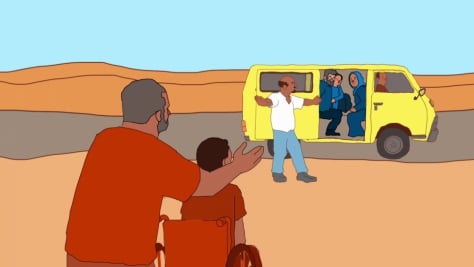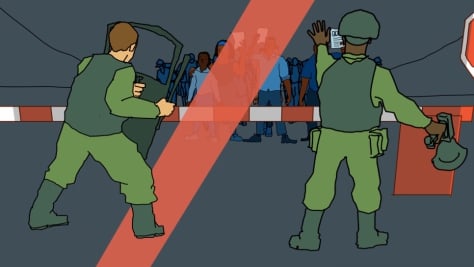Words matter
Understanding the terms refugees, migration, and asylum begins with understanding a few basics. The word refugee is often used as a blanket term for people displaced by war, violence or persecution. But there are different categories of displaced people, each with specific needs. Knowing what these categories mean exactly is important and will contribute to a better understanding of this complex topic. It will also help you better understand the situation of refugees, asylum-seekers or others you may be teaching.
- Download the Words Matter summary table for easy reference when you are teaching or putting a lesson plan together.
Watch these explainer animations yourself as a preparation for your lesson or lecture. Some of these materials are also included in the suggested teaching materials for secondary education.
Migrants
Migrants are people moving to another country for other reasons beyond conflict and persecution.
Internally displaced people
Internally displaced people are seeking safety in other parts of their country.
Asylum-seekers
Asylum-seekers are people seeking international protection from conflict and persecution.
Where do refugees come from?
Refugees come from countries all over the world. More than half come from Syria and Afghanistan and Somalia.
Where do refugees go?
Most refugees are in developing countries. They tend to stay in neighbouring countries.
Who helps refugees?
UNHCR, governments and many other organizations help refugees. You can help too.
Age-appropriate teaching materials
Before you start teaching about the topic of refugees, asylum and migration, you need to carefully consider which materials you will present to your pupils. Materials should not cause distress, and the complexity of the subject matter needs to be age-appropriate.
Read our recommendations for each age group and download teaching materials with suggestions for age-appropriate teaching about refugees, asylum and migration.













